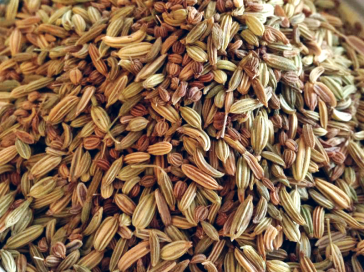Ill-health starts with poor digestion. Eating an easy-to-digest freshly prepared meal is ideal, but sometimes, no matter how hard we try, we may end up eating something heavy, or not-so-terribly-fresh, or suiting our body’s

needs. This SVA digestive spice mix is a simple and quick recipe that you can make and carry in your purse or pocket, and use throughout the day. It will keep your digestive fire well-stoked, and ensure that your meals are all properly absorbed and digested – whether you “cheat” or not!
Optimal digestion is when you make zero toxins, or ama, from the food you eat. Ama-free optimal digestion occurs when your digestive flame (pachakagni) is neither low nor too high. Due to stress, or when you eat heavy processed indigestive food, or left-overs, the digestive fire can go either low (mandagni), high (teekshnagni), or sometimes-low-sometimes-high (vishmagni).
Low agni (mandagni) makes ama; when you have low agni, it means you are not able to break-down and absorb all that you are eating, and you produce semi-digested toxic matters after you eat. You will usually feel lack of appetite, or feel heavy even after eating something very light, and in general not desire food.
If your digestive fire is high, then after consuming a meal, your body produces “amavisha” or poisonous acidic toxins, also known as free-radicals. When you have “teekshnagni” then no matter what you eat, you crave more! You will also crave sugar a lot. You may wake up hungry in the middle of the night.
If you have “vishmagni,” that is: if your digestive fire is sometimes slow and sometimes too high, then you will make both ama and amavisha. With “vishmagni,” you sometimes feel hungry and then at other times, not. You will experience a feeling of fullness alternating with a feeling of excessive hunger.
“Samagni” is the state of a balanced digestive fire – neither too low nor too high. When you have “samagni,” you have a balanced appetite for food, attuned with the needs of your body. After consuming a meal, you feel satiated, and blissful.
If you have not been experiencing the blissful state of “samagni” after consuming your meals, then you probably need to support your digestion. To have “samagni” you need to have “pachak pitta” and “pachak agni” in your stomach balanced out. Packak pitta is the fuel, while pachak agni is the flame in your stomach. The fuel feeds the flame, so your stomach can break down and cook the food.
This SVA recipe is very simple, consists of only 2 ingredients, but it works like a charm. Fennel cools off excess fuel or pachak pitta; while ajwain sharpens the flame, or pachak agni.
In an open pan, or in your toaster-over, dry toast Fennel and Ajwain seeds in the following proportions:
80% Fennel
20% Ajwain
Mix them. Let the mixture cool off. Then add to a container and it’s ready to be used.
Chewing a teaspoon at a time, after lunch or dinner. Or as needed. This spice mix also serves as a delicious natural mouth freshener!
Note: Fennel is highly estrogenic. If, for any reason, you restrict your intake of estrogenic foods, simply replace the Fennel seeds with Coriander seeds in the above recipe and follow the same steps.

I was able to purchase Durbar brand (Distributed by Kohinoor Foods) Ajwain seeds, but the package also labels them as Parsley seeds. Are Ajwain seeds the same as Parsley seeds? I understood them to be completely different plants.
Parsley seeds and Ajwain seeds are not the same.